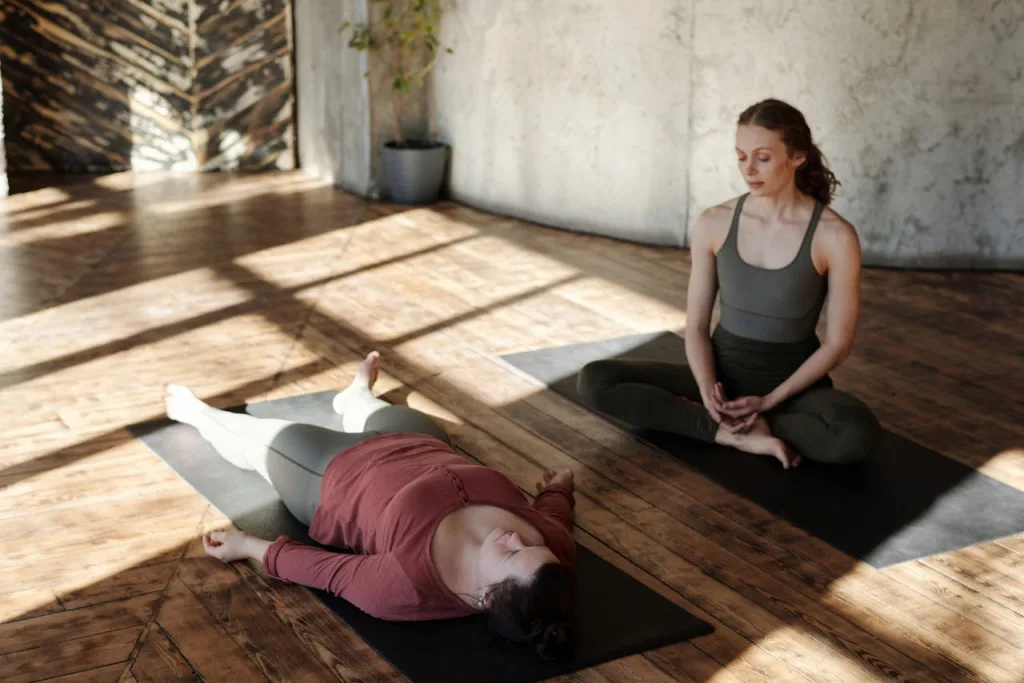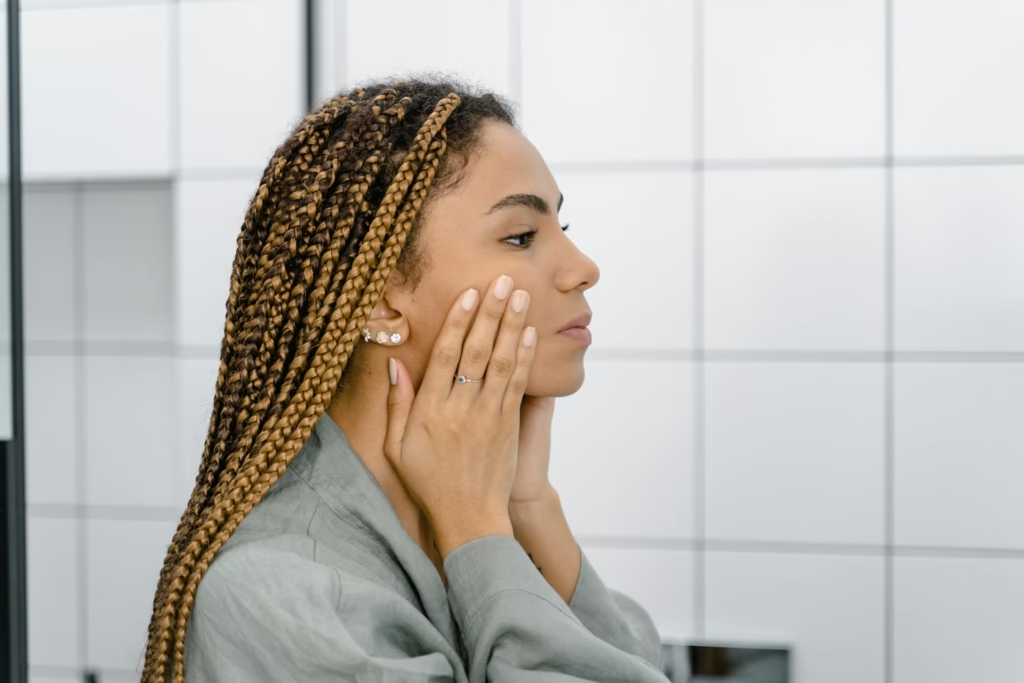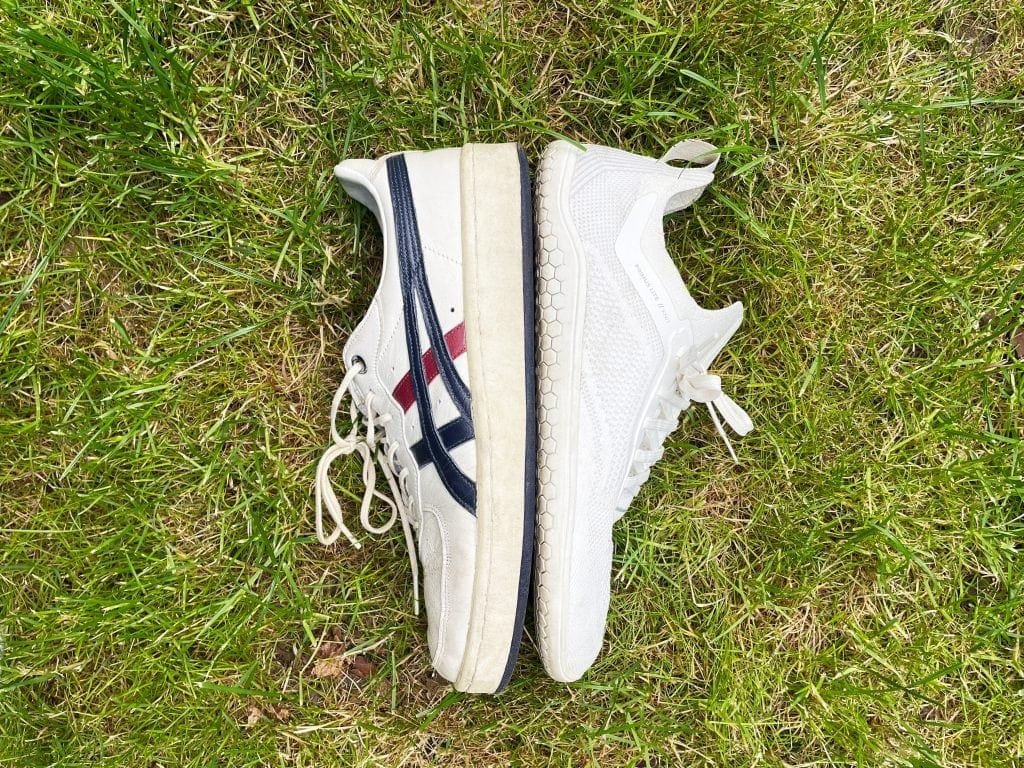We’ve all heard that a sedentary lifestyle is not good for us. Our bodies aren’t designed to sit still for so many hours a day. Movement isn’t just about staying active; it’s essential for living a longer, healthier life. Regular exercise boosts energy, improves mood, focus, and creativity. It is also crucial for our longevity. It strengthens bones, builds and maintains muscle mass, and enhances flexibility. It also supports heart and lung health while reducing weakness and the risk of injuries, which is so important as we age.
This article explores the best types of exercise for longevity. Is avoiding exercise truly detrimental, and could some activities even shorten our lifespan? By analyzing research and expert insights, we’ll find out what matters when it comes to movement and long-term health.
There are important physical aspects of good exercise for longevity:
- Improves bone density
- Builds and maintains muscle mass
- Improves stability and flexibility
- Supports our lung and heart health
But sport is not only about physical fitness. Exercise also improves our mood. It’s also about social interaction and connection. So, a sport you do in a group or with another person will be beneficial not only physically but also mentally.. And let’s not forget about cognitive health. Staying sharp and avoiding Alzheimer’s and dementia is so important as we age, and exercise can help with that.
The Best Sports for Longevity
Based on an observational study of sedentary individuals, here are the best sports for expanding your life:
Tennis, 9.7 years
Badminton, 6.2 years
Soccer, 4.7 years
Cycling, 3.7 years
Swimming, 3.4 years
Jogging, 3.2 years
Calisthenics, 3.1 years (1)
We want to list the best sports not only for expanding your life, but also to focus on muscle mass, aerobic ability, potential injuries, as well as cognitive function.
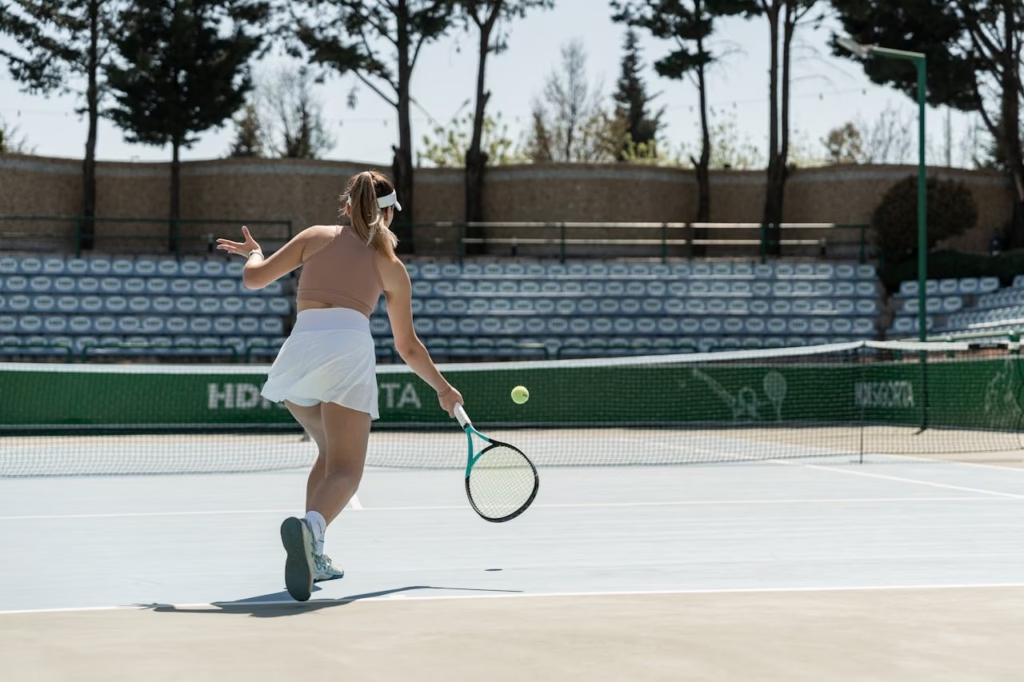
1. Racket Sports (Tennis, Badminton, Squash, Pickleball, Padel)
So why are racket sports so good for us? High-intensity bursts improve heart and lung function. The weight-bearing nature helps maintain bone density, and fast reflexes improve cognitive function. There is also a social aspect, and focusing on the ball helps improve mental health.
And you don’t have to overdo it to feel the benefits. Studies show that even 30 minutes of moderate-intensity badminton a week could effectively improve cognitive function and prevent cognitive decline in older adults (2).
No wonder tennis and padel are becoming so popular. It is not only fun but also one of the best sports for longevity. This summer, racket sport is on my list to learn and practise!
2. Swimming
Swimming is another great sport for longevity because it works all major muscle groups with a low injury risk. Swimming improves cardiovascular endurance (6) and lung capacity. Water resistance helps maintain muscle mass without putting strain on your joints.
It is a great sport for pregnant women, older adults, or someone suffering from arthritis or obesity (3). To get the best out of your swimming pool day, try interval swimming sessions and aquatic resistance training to improve both your cardiovascular endurance and muscle strength (4).
Swimming in the sea has benefits beyond improving fitness. It alters the mind, enhances connection to nature, and improves overall well-being (5).

3. Jogging, Running, or Hiking
“Runners have a 25% to 40% reduced risk of premature mortality and live approximately 3 years longer than non-runners (7).”
Although jogging is more weight-bearing on your joints than swimming or biking, it is still one of the best exercises for longevity. It improves heart and lung capacity, strengthens bones and muscles, promotes fat loss, and boosts insulin sensitivity. Going for a hike or a run outdoors is also great, as you get exposed to the sun and get some vitamin D.
And it doesn’t have to be extreme. You don’t need to run a marathon. Only 1 to 2.4 hours of moderate-intensity jogging a week can significantly boost your health (8). Even long-distance runners are way healthier than non-runners, and studies show that marathon runners have increased longevity compared with the general population (16) (17)

4. Strength Training (Including Bodyweight Training)
I am so glad that more and more women understand the importance of strength training for longevity. Muscle strength is predictive of longevity for both men and women. It’s great to see more women lifting weights, and gym heavy racks are not only for men anymore. It’s also inspiring to see women like Dr. Stacy T. Sims educating people on the importance of strength training, especially as we age.
Strength training prevents muscle loss (sarcopenia), improves bone density, and reduces fracture risk. It also boosts testosterone in men and estrogen balance in women, both of which are crucial for longevity. Strength training can not only prevent muscle and bone loss associated with aging but also reverse it (9).

5. Cycling
Cycling is great for cardiovascular health, but since it is not weight-bearing, it doesn’t support bone density as much as running or strength training would.
Interestingly, many people think that while moderate exercise is beneficial, long-term high-intensity training might be harmful. But a study of Tour de France cyclists challenges that idea. Researchers analyzed the lifespans of 834 professional riders from France, Italy, and Belgium who competed between 1930 and 1964, comparing their survival rates to those of the general population. Surprisingly, the cyclists lived on average 17% longer, with an average age of death at 81.5 years versus 73.5 in the general public. This large difference suggests that repeated, intense physical activity, when performed by well-trained individuals, may not only be safe but actually extend lifespan (11). There could be other factors, like less drinking and smoking and better nutrition in Tour de France cyclists, but 17% is a great number for longevity.
Cycling reduces the risk of cardiovascular disease, slows down aging, helps reduce weight and stress, and also minimizes air pollution risks (12).
Findings are mixed on whether long-distance cycling can be problematic for men in terms of erectile dysfunction due to pressure from the bike seat (13) (14) (15). So if you’re a man who loves long-distance bike rides, make sure to choose the right seat and adjust its positioning properly to prevent unnecessary pressure.

6. Rowing & Kayaking
Similar to swimming, rowing, and kayaking work nearly every muscle in the body. These sports combine aerobic and resistance training in one workout. They improve lung capacity and cardiovascular health while being low-impact, which reduces joint wear.
However, if you already spend a lot of time sitting for work, a standing-up sport might be better for you.
The Worst Exercise for Longevity
Not all sports are good for you, mainly because some come with a higher chance of head or body injuries that can affect quality of life later on. Some sports have even been shown to reduce life expectancy.
1. American Football & Rugby
While both sports are great for heart health, some former players experience higher rates of musculoskeletal issues. There is also mixed evidence regarding long-term brain health and quality of life. The high concussion risk can lead to brain degeneration (CTE, dementia). The injury risk, including broken bones and torn ligaments, can result in permanent damage that limits movement in older age (10).
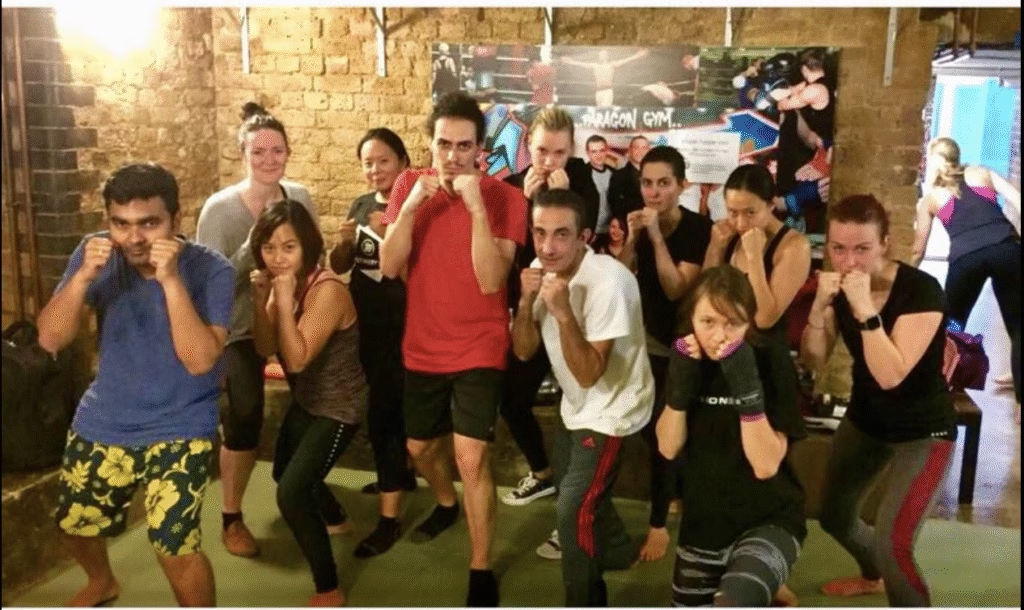
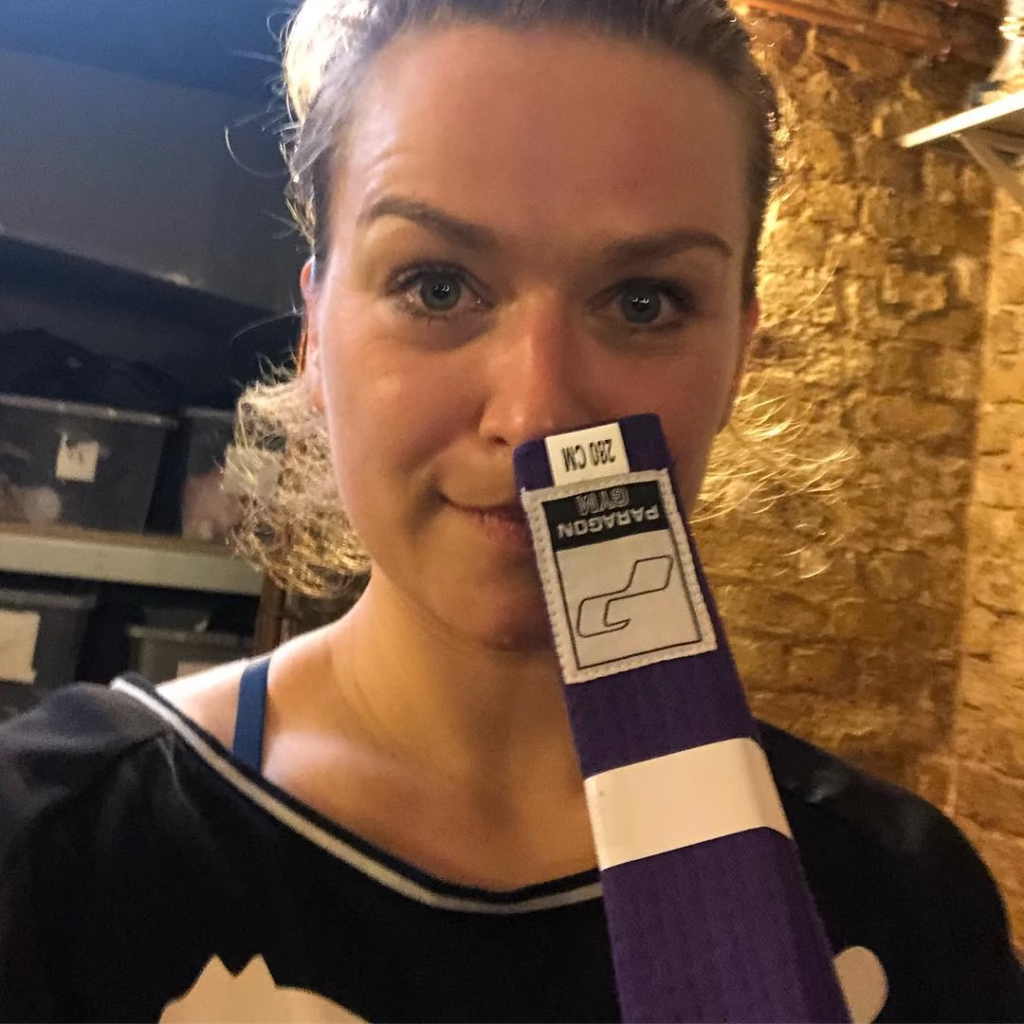
2. Martial Arts & Boxing
Kickboxing is probably my favourite sport, and I am a proud holder of a purple belt. It’s amazing for cardio and great for releasing stress. Martial arts and boxing are often practised in clubs that offer a strong sense of community, which makes them enjoyable for many. However, similar to rugby and football, there is a danger of head injuries and concussions, which can increase the risk of Alzheimer’s and Parkinson’s. If martial arts is your go-to sport, maybe try to avoid sparring without protection and stick to shadow boxing instead of fighting in the ring.
3. Powerlifting & Bodybuilding at Extreme Levels
We’re not talking about CrossFit or regular gym sessions. Extreme weight lifting can be dangerous, as it puts massive stress on your joints. The injury risk is lower than in contact sports, but many bodybuilding athletes suffer from back injuries and chronic pain (11).
To Summarise the Worst Sports
Two things stand out. Anything that can cause a head injury or is excessive in nature is not great for our bodies in the long term.
No Sport is the Worst Sport
Although some sports may be more dangerous and should be practised with caution, the worst kind of exercise is no exercise at all. Studies show that a sedentary lifestyle increases all-cause mortality, cardiovascular disease mortality, cancer risk, and the risk of metabolic disorders such as obesity, diabetes, hypertension, and dyslipidemia. It also increases musculoskeletal issues such as joint pain and osteoporosis, and mental health problems like depression and cognitive decline (18) (19).
The Best Longevity-Focused Fitness Plan (Even If You’re Short on Time)
We are all busy, and not many of us can exercise six times a week. More and more studies show that strength training is very important for longevity, so it should be a priority. Things might slightly change during the warmer months when you don’t want to spend time in the gym but are walking, hiking, or biking around, but try to stick to at least two strength training workouts each week and base your aerobic activity around it.
A perfect week could look like this:
- 2 to 3 strength workouts
- 1 or 2 aerobic workouts (this can be tennis, running, or swimming)
- 1 or 2 mobility or yoga sessions
If this sounds like too much, you can also combine your workouts. Do mobility and strength together, or combine cardio and strength to save time. For example, you could do half an hour of yoga followed by half an hour of weight training, or a short run and a strength session.
Conclusion: Exercise for longevity is a must
What we have learned is that no matter what sport you choose, it will benefit your body as long as it doesn’t lead to injuries. The worst sport is no sport. So if you’re still contemplating joining that gym or running club, just take a small step and start exercising. Your body and mind will thank you.
There are many sports that are great for your health, but probably the most beneficial one is the one you enjoy and do regularly. We all need to select what we love and also mix in other types of movement. Don’t just stick to what’s comfortable. If you’re not flexible, incorporate yoga. If you lack muscle, start lifting weights. If you get out of breath quickly, try running or playing tennis.
The key takeaway is that the best exercise is the one you enjoy and commit to. To live a long, healthy life, we need to get moving and try different activities that grow our muscles, keep us flexible, help us connect with others, and support both body and mind. Even if you don’t like something at first, give it time—you might end up loving it the more you do it.
You might also like: The Best Leg Workouts for Women: Sculpt, Strengthen & Tone,
Shape & Strengthen: Best YouTube Glute Workouts for Women
references
- Schnohr, P., O’Keefe, J., Holtermann, A., Lavie, C., Lange, P., Jensen, G., & Marott, J. (2018). Various Leisure‐Time Physical Activities Associated With Widely Divergent Life Expectancies: The Copenhagen City Heart Study. Mayo Clinic Proceedings, 93, 1775–1785. https://doi.org/10.1016/j.mayocp.2018.06.025.
- Oishi, A., & Yamasaki, T. (2024). Benefits of Badminton for Preventing Cognitive Decline and Dementia. Encyclopedia. https://doi.org/10.3390/encyclopedia4020063.
- Grigoreva, I., Volkova, E., & Fomina, U. (2022). THE HEALTH EFFECT OF SWIMMING. Materials of the National Scientific and Practical Conference “Current issues and prospects for the development of modern science”. https://doi.org/10.34220/cipdms2022_100-104.
- Chen, Y., Lan, Y., Zhao, A., Wang, Z., & Yang, L. (2024). High-intensity interval swimming improves cardiovascular endurance, while aquatic resistance training enhances muscular strength in older adults. Scientific Reports, 14. https://doi.org/10.1038/s41598-024-75894-0.
- Denton, H., & Aranda, K. (2020). The wellbeing benefits of sea swimming. Is it time to revisit the sea cure?. Qualitative Research in Sport, Exercise and Health, 12, 647 – 663. https://doi.org/10.1080/2159676x.2019.1649714.
- Lazar, J., Khanna, N., Chesler, R., & Salciccioli, L. (2013). Swimming and the heart.. International journal of cardiology, 168 1, 19-26 . https://doi.org/10.1016/j.ijcard.2013.03.063.
- Lee, D., Brellenthin, A., Thompson, P., Sui, X., Lee, I., & Lavie, C. (2017). Running as a Key Lifestyle Medicine for Longevity.. Progress in cardiovascular diseases, 60 1, 45-55 . https://doi.org/10.1016/j.pcad.2017.03.005.
- O’Keefe, J., O’Keefe, E., & Lavie, C. (2018). socially interactive exercise improves longevity the power of playing with friends. .
- Gremeaux, V., Gayda, M., Lepers, R., Sosner, P., Juneau, M., & Nigam, A. (2012). Exercise and longevity.. Maturitas, 73 4, 312-7 . https://doi.org/10.1016/j.maturitas.2012.09.012.
- Cunningham, J., Broglio, S., & Wilson, F. (2018). Influence of playing rugby on long-term brain health following retirement: a systematic review and narrative synthesis. BMJ Open Sport — Exercise Medicine, 4. https://doi.org/10.1136/bmjsem-2018-000356.
- Sanchis-Gomar, F., Olaso-González, G., Corella, D., Gómez-Cabrera, M., & Viña, J. (2011). Increased Average Longevity among the “Tour de France” Cyclists. International Journal of sports Medicine, 32, 644 – 647. https://doi.org/10.1055/s-0031-1271711.
- Rynda, R., Tanaka, V., Qudsiyah, I., Maharani, N., Rachelia, D., Notoprawiro, N., Augusto, K., Wulandari, M., & Juhanna, I. (2022). EFFECT OF CYCLING ON CARDIOVASCULAR HEALTH ASSOCIATED WITH AGING PROCESS. Sport and Fitness Journal. https://doi.org/10.24843/spj.2022.v10.i01.p09.
- Gan, Z., Ehlers, M., Lin, F., Wright, S., Figler, B., & Coward, R. (2019). PD43-01 SYSTEMATIC REVIEW AND META-ANALYSIS OF CYCLING AND ERECTILE DYSFUNCTION. The Journal of Urology, 201, e755. https://doi.org/10.1097/01.JU.0000556569.85143.0a.
- Gan, Z., Ehlers, M., Lin, F., Wright, S., Figler, B., & Coward, R. (2020). Systematic Review and Meta-Analysis of Cycling and Erectile Dysfunction.. Sexual medicine reviews. https://doi.org/10.1016/j.sxmr.2020.01.002.
- Baran, C., Mitchell, G., & Hellstrom, W. (2014). Cycling-Related Sexual Dysfunction in Men and Women: A Review.. Sexual medicine reviews, 2 3-4, 93-101 . https://doi.org/10.1002/smrj.32.
- Foulkes, S., Hewitt, D., Skow, R., Dover, D., Kaul, P., La Gerche, A., & Haykowsky, M. (2024). Outrunning the grim reaper: longevity of the first 200 sub-4 min mile male runners. British Journal of Sports Medicine, 58, 717 – 721. https://doi.org/10.1136/bjsports-2024-108386.
- Rosin, B. (2017). Is marathon running toxic? An observational study of cardiovascular disease prevalence and longevity in 54 male marathon runners. The Physician and Sportsmedicine, 45, 105 – 109. https://doi.org/10.1080/00913847.2017.1288545.
- Park, J., Moon, J., Kim, H., Kong, M., & Oh, Y. (2020). Sedentary Lifestyle: Overview of Updated Evidence of Potential Health Risks. Korean Journal of Family Medicine, 41, 365 – 373. https://doi.org/10.4082/kjfm.20.0165.
- Same, R., Feldman, D., Shah, N., Martin, S., Rifai, M., Blaha, M., Graham, G., & Ahmed, H. (2015). Relationship Between Sedentary Behavior and Cardiovascular Risk. Current Cardiology Reports, 18, 1-7. https://doi.org/10.1007/s11886-015-0678-5.
Silvija Meilunaite, PN1-NC, CSMC, is a certified nutrition and menopause coaching specialist, and a writer in the nutrition and self-improvement field. She explores science-based approaches to holistic health and plant-based nutrition, with a strong focus on researching clean, non-toxic products that support long-term well-being.
- S. Meilunaitehttps://barefootbasil.com/author/silvootegmail-com/
- S. Meilunaitehttps://barefootbasil.com/author/silvootegmail-com/
- S. Meilunaitehttps://barefootbasil.com/author/silvootegmail-com/
- S. Meilunaitehttps://barefootbasil.com/author/silvootegmail-com/


